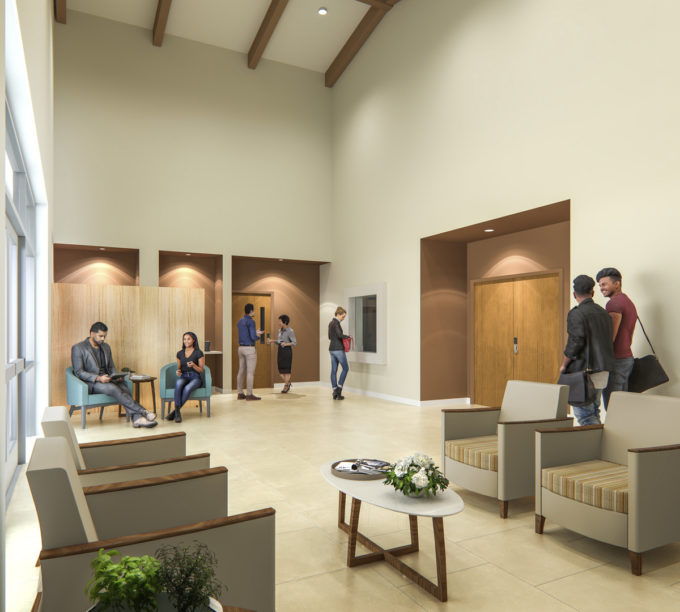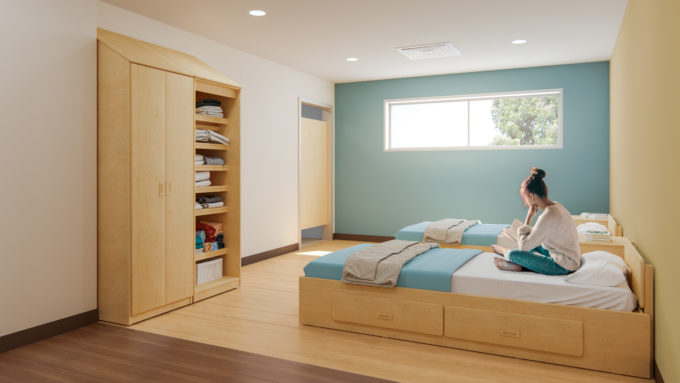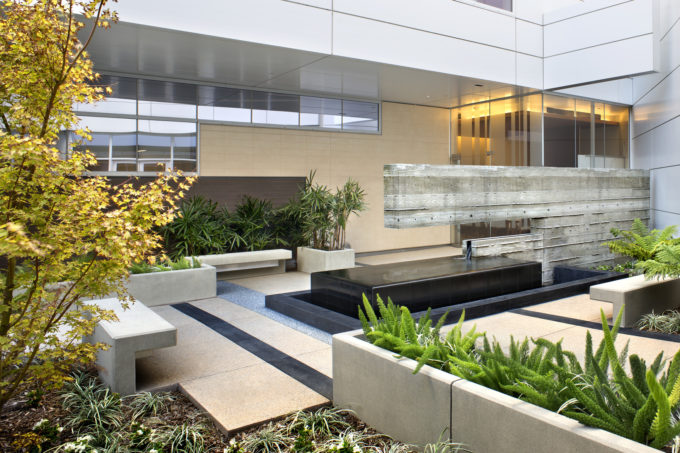Most patients with mental or behavioral health issues are non-violent, but oftentimes, whether it’s a reaction to medications, personal trauma, or a side effect of their condition, aggressive behavior in inpatient behavioral health facilities is a serious concern. A patient’s aggression can lead to sedation, physical restraint, or even seclusion to protect themselves and others in the facility. These behaviors also lead to staff physical and psychological injuries and burnout. As healthcare designers, we consider how daylighting, specific color palettes and easy wayfinding makes a facility more conducive to health and healing. Can architecture also reduce aggression in inpatient behavioral health patients?

There is not a great deal of research on the effects of the physical environment in psychiatric hospitals. but there have been a few studies carried out in northern Europe as well as studies carried out in other inpatient settings and non-hospital settings such as prisons and apartments. Roger Ulrich, Professor of Architecture at the Center for Healthcare Building Research at the Chalmers University of Technology in Sweden, has been studying how the physical environment can influence outcomes in the healthcare setting for many years. His theory of stress reduction is the most accepted today on the connection between the physical environment and healthcare outcomes. This theory states that reduced stress will lead to reduced negative emotions which in turn leads to a reduction of aggressive behaviors. Considering this theory, and research on stress-reducing strategies, we’ve laid out four strategies pertaining to the built environment that can reduce stress and therefore aggression in behavioral health patients:
Reduction of Crowding Stress
High social density, the number of people in each room, can cause crowding stress. Crowding can cause negative feelings including increased anxiety or feeling restricted and confined. This stress can be reduced by incorporating more single-patient bedrooms with private bathrooms and higher quantities of smaller communal areas to minimize these feelings. Not only is social density reduced, but patients can also regulate their social interactions, which gives them more autonomy over their experience. Single bedrooms give patients the option for privacy when they need it and communal areas with movable seating allow patients some control of their own personal space and interactions. By finding ways to reduce crowding stress, designers have the opportunity to help patients feel calmer, empowered within their space, and less confined, all of which can ease aggression.

Minimize Environmental Stress
Environmental stressors include noise, lack of control over the environment, and the cold institutional feel. Studies have shown that unpredictable or uncontrollable noise increases stress and can trigger aggression in healthcare settings in general. Implementing acoustically rated walls and softening the interior surfaces of a room can help to reduce sound transmission throughout the facility. Giving patients some control over their environment can help reduce stress and therefore reduce aggressive behaviors. Some ways to give patients more control over their environment is to implement moveable seating in communal areas, having controllable lighting in the patient rooms, including windows that can be partially opened, and including opportunities for individualizing the patients’ space such as pictures. One other element that has been shown to reduce stress and aggression in patients is to minimize the appearance of special safety features, such as locks, cameras, furniture bolted to the floor, or fully enclosed nurse stations that give a space an institutional appearance. Instead, utilize unobtrusive safety measures. One example of this would be to implement direct lines of sight from an open nurse station not separated by glass into patient rooms or activity rooms instead of having security cameras.
Positive Distractions
Gardens have been shown to reduce stress in patients, visitors, and staff in general hospitals. Gardens with lots of vegetation and flowers arranged in a natural style are suggested to be effective than gardens with geometric layouts and lots of hardscape. Views to nature have been shown to reduce psychological and physiological stress and reduce anger. These views can be created with viewing windows to exterior gardens.
Research suggests that representational nature art is more effective in reducing stress and aggressive behavior than abstract art or the lack of art. Murals of trees or flowers can help create a calming sense of space. Abstract art should be avoided as it can be physiologically stressful to the visual system and the brain.
Sufficient daylight exposure has been shown to have a positive effect on patient mental health. In addition, staff with access to daylight in their work environment report less stress and better health than those working in units without daylight. Since security is of greater concern in behavioral health facilities, stylized window slits and skylights can create access to natural light without compromising patient safety.
These positive distractions are features incorporated into many healthcare designs for their healing benefits. By incorporating them into a behavioral health facility, the facilities feel less institutional. These distractions benefit the patients, staff, and visitors by reducing stress and improving mental health.

Observation
Having good visibility to communal areas and bedroom doors allows staff to anticipate and mitigate aggressive behavior and can help reduce aggressive behaviors. A few different studies have indicated that organizing patient rooms around a large central area instead of the traditional layout with patient rooms on a double-loaded corridor can help reduce aggression.
Sources:
Lundin, Stefan. “Can Healing Architecture Increase Safety in the Design of Psychiatric Wards?” HERD: Health Environments Research & Design Journal, 2020, p. 193758672097181., doi:10.1177/1937586720971814.
Schaaf, P. S. Van Der, et al. “Impact of the Physical Environment of Psychiatric Wards on the Use of Seclusion.” British Journal of Psychiatry, vol. 202, no. 2, 2013, pp. 142–149., doi:10.1192/bjp.bp.112.118422.
Ulrich, Roger S., et al. “Psychiatric Ward Design Can Reduce Aggressive Behavior.” Journal of Environmental Psychology, vol. 57, 2018, pp. 53–66., doi:10.1016/j.jenvp.2018.05.002.

